- Benefits of Growing High-Growing Tomatoes
- 1. Increased Yield
- 2. Space Efficiency
- 3. Disease Resistance
- 4. Aesthetically Pleasing
- 5. Easier Harvesting
- 6. Improved Air Circulation
- 7. Versatility
- Best Soil and Climate Conditions for High-Growing Tomatoes
- Soil Conditions
- Climate Conditions
- Additional Tips for Success
- 4 Salad Varieties of High-Growing Tomatoes
- 1. Cherry Tomatoes
- 2. Grape Tomatoes
- 3. Roma Tomatoes
- 4. Green Zebra Tomatoes
- Popular Uses and Recipes for Salad Varieties
- 1. Fresh salads:
- 2. Caprese salad:
- 3. Bruschetta:
- 4. Salsa:
- Beautiful Canning Options for High-Growing Tomatoes
- 1. Black Krim
- 2. Green Zebra
- 3. Pineapple
- 4. Cherokee Purple
- 5. Yellow Pear
- Canning Equipment and Techniques
- Equipment
- Techniques
- 5 Delicious Canning Recipes to Try
- 1. Classic Tomato Sauce
- 2. Spicy Salsa
- 3. Sweet Tomato Jam
- 4. Pickled Green Tomatoes
- 5. Tomato Relish
- Tips for Storing and Enjoying Canned High-Growing Tomatoes
- Enjoying Your Canned Tomatoes
- “Question-Answer”
- What are the best salad tomato varieties?
- Can you recommend some salad tomato varieties that are easy to grow?
- Which tomato varieties are ideal for canning?
- What are some tips for growing salad tomatoes?
- Are there any tomato varieties that are resistant to diseases?
- Can you recommend some tomato varieties that have unique colors?
- “Video” My Top 10(ish) MUST GROW Tomato Varieties
Tomatoes are a versatile fruit that can be used in a variety of dishes, from salads to soups and sauces. Whether you are looking to add some fresh crunch to your summer salad or preserve the flavors of the harvest season, there are many high-growing tomato varieties that are sure to meet your needs.
Salad tomatoes are known for their juicy texture and refreshing taste. They are typically smaller in size and come in a range of colors, from vibrant red to yellow and even purple. Some popular salad tomato varieties include the Sweet 100, which produces clusters of sweet cherry tomatoes, and the Green Zebra, which offers a tangy and zesty flavor.
If you are a fan of canning and preserving, there are also beautiful tomato varieties that are perfect for this purpose. These tomatoes often have thicker walls and a higher sugar content, making them ideal for sauces and salsas. The Roma tomato is a classic canning tomato, known for its meaty flesh and rich flavor. The San Marzano tomato, a staple in Italian cuisine, is another great option for canning, with its elongated shape and intense sweetness.
Whether you are looking to enjoy a fresh summer salad or stock up on canned goods for the winter, exploring the top high-growing tomato varieties is a great way to enhance your culinary adventures. With so many delicious options available, you are sure to find the perfect tomatoes to suit your taste and cooking needs.
Benefits of Growing High-Growing Tomatoes
Growing high-growing tomatoes can be a rewarding experience for any gardener. These tall tomato plants offer numerous benefits that make them a popular choice among home gardeners. Here are some of the key benefits of growing high-growing tomatoes:
1. Increased Yield
High-growing tomato varieties often produce larger yields compared to bushier varieties. Their height allows for more fruit to develop and ripen, resulting in a bountiful harvest. This is especially advantageous for gardeners looking to preserve tomatoes through canning or freezing.
2. Space Efficiency
Since high-growing tomatoes grow vertically, they take up less space in the garden compared to sprawling, bushy varieties. This is particularly beneficial for gardeners with limited space or those who want to maximize their garden’s productivity. Vertical growing also makes it easier to manage and harvest the plants.
3. Disease Resistance
Some high-growing tomato varieties have been specifically bred to be more resistant to common tomato diseases, such as blight, wilt, and leaf spot. This can save gardeners from the disappointment of seeing their tomato plants succumb to diseases and ensure a healthy harvest.
4. Aesthetically Pleasing
The tall and upright growth habit of high-growing tomato plants can add visual interest to the garden. They create a vertical element that can be a focal point or backdrop for other plants. Additionally, these plants can be trellised or supported with stakes, adding structure and aesthetics to the overall garden design.
5. Easier Harvesting
The vertical growth of high-growing tomato plants makes it easier to access and harvest the fruits. Gardeners don’t have to bend over or search through dense foliage to find ripe tomatoes. This not only saves time and effort but also reduces the risk of damaging the plants during the harvest process.
6. Improved Air Circulation
The open and vertical growth of high-growing tomatoes allows for better air circulation around the plants. This helps to reduce the risk of fungal diseases, as the foliage dries quickly after rainfall or watering. Improved air circulation also leads to healthier plants and prevents the development of mold or rot on the fruit.
7. Versatility
High-growing tomato varieties come in various types, including salad tomatoes and options ideal for canning. This means that gardeners can choose the specific type that suits their needs and preferences. Whether you want juicy tomatoes for salads or robust varieties for canning, you can find a high-growing tomato variety that meets your requirements.
In conclusion, growing high-growing tomatoes offers several benefits, including increased yield, space efficiency, disease resistance, aesthetics, easier harvesting, improved air circulation, and versatility. These advantages make high-growing tomatoes a popular choice for home gardeners who want to enjoy a productive and visually appealing tomato garden.
Best Soil and Climate Conditions for High-Growing Tomatoes
When it comes to growing high-quality tomatoes, the right soil and climate conditions can make all the difference. Here are some essential factors to consider:
Soil Conditions
- Well-Draining Soil: Tomatoes thrive in well-draining soil that allows excess water to escape, preventing root rot. Avoid heavy clay soils that retain moisture.
- Rich in Organic Matter: Prepare the soil by adding compost or well-rotted manure to improve its fertility. This will provide the necessary nutrients for healthy tomato growth.
- pH Level: Aim for a slightly acidic soil with a pH range of 6.0 to 7.0. This is the optimum range for tomato plants to absorb nutrients efficiently.
- Adequate Drainage: Ensure that the soil has good drainage to prevent waterlogging, which can lead to root diseases and stunted growth.
Climate Conditions
Note: While tomatoes are grown in a wide range of climates, these conditions are generally considered ideal for high-growth.
- Sunlight: Tomatoes require at least six to eight hours of direct sunlight daily for optimal growth. Choose a sunny spot in your garden that receives the maximum amount of sunlight.
- Temperature: Tomatoes are warm-season plants and thrive in temperatures between 70 to 85 degrees Fahrenheit (21 to 29 degrees Celsius) during the day and 55 to 65 degrees Fahrenheit (13 to 18 degrees Celsius) at night.
- Frost Protection: Tomatoes are highly sensitive to frost, so make sure to plant them after the threat of frost has passed. Consider using protective mulch or row covers if frost is a concern in your area.
Additional Tips for Success
While soil and climate conditions play a crucial role in tomato growth, here are a few additional tips for ensuring success:
- Water tomatoes consistently to keep the soil evenly moist. Avoid overwatering, as it can lead to disease and fruit splitting.
- Provide support for vining varieties by using cages, stakes, or trellises to prevent the plants from sprawling on the ground.
- Regularly monitor for pests and diseases, and take appropriate measures to control them.
- Prune the tomato plants to promote airflow and remove any suckers that may divert energy from fruit production.
- Harvest tomatoes when they are fully ripe for the best flavor and texture.
By paying attention to the soil and climate conditions, as well as following these tips, you’ll be well on your way to growing high-growing tomatoes that are perfect for salads or canning!
4 Salad Varieties of High-Growing Tomatoes
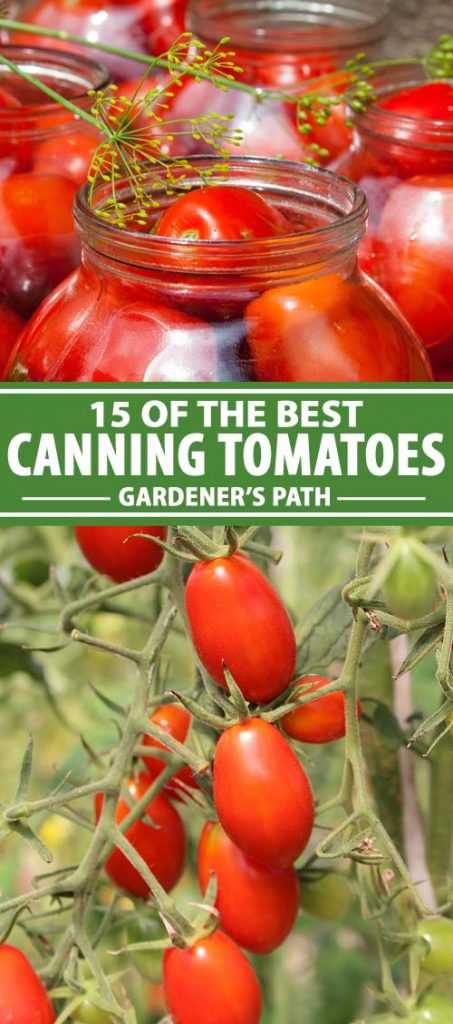
If you’re looking to grow your own salad tomatoes, there are several high-growing varieties that are perfect for the job. These tomatoes are known for their delicious taste and juicy texture, making them a great addition to any salad.
1. Cherry Tomatoes
Cherry tomatoes are small, round, and incredibly sweet. They come in a variety of colors, including red, yellow, and even black. Cherry tomatoes are perfect for salads because of their small size, making them easy to eat. They also add a pop of color to your salad.
2. Grape Tomatoes
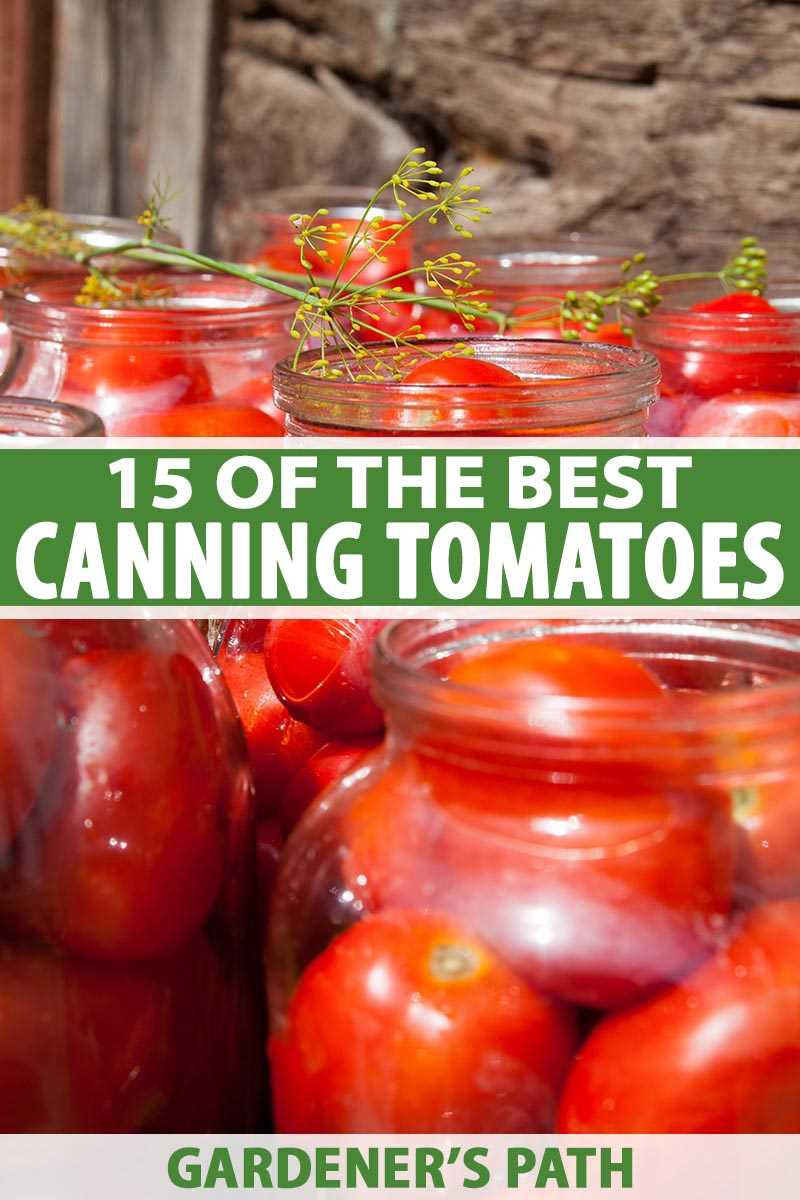
Grape tomatoes are slightly larger than cherry tomatoes and have an oval shape. They are known for their intense flavor and firm texture. Grape tomatoes are a great option for salads because they hold their shape well and add a burst of flavor to each bite.
3. Roma Tomatoes
Roma tomatoes are known for their low moisture content and dense flesh. They have a rich, tangy flavor and are perfect for salads because they don’t make the salad too watery. Roma tomatoes are also great for making sauces and canning.
4. Green Zebra Tomatoes
Green Zebra tomatoes are small and have a bright green color with yellow stripes. They have a slightly tangy and sweet flavor, making them perfect for salads. Green Zebra tomatoes add a unique visual appeal to your salad with their vibrant color.
Overall, these salad varieties of high-growing tomatoes are a great choice for adding flavor, color, and texture to your salads. Whether you prefer the sweetness of cherry tomatoes or the tanginess of Roma tomatoes, there’s a perfect tomato variety out there for you. Happy gardening!
Popular Uses and Recipes for Salad Varieties
If you have grown salad varieties of tomatoes in your backyard or have recently bought them from a local farmer’s market, you might be wondering what you can do with these vibrant and flavorful tomatoes. Here are some popular uses and recipes for salad varieties that will make the most out of these delicious tomatoes:
1. Fresh salads:
One of the most obvious and popular uses for salad varieties of tomatoes is adding them to fresh salads. Their juicy texture and tangy flavor make them a perfect addition to any salad. Here is a simple recipe for a refreshing tomato salad:
- Ingredients:
- Salad variety tomatoes, sliced
- Red onion, thinly sliced
- Fresh basil leaves, torn
- Extra virgin olive oil
- Balsamic vinegar
- Salt and pepper to taste
- Instructions:
- In a large bowl, combine the sliced tomatoes, red onion, and torn basil leaves.
- In a small bowl, whisk together the olive oil, balsamic vinegar, salt, and pepper. Drizzle the dressing over the tomato mixture and gently toss to combine.
- Let the salad sit for a few minutes to allow the flavors to meld together, then serve.
2. Caprese salad:
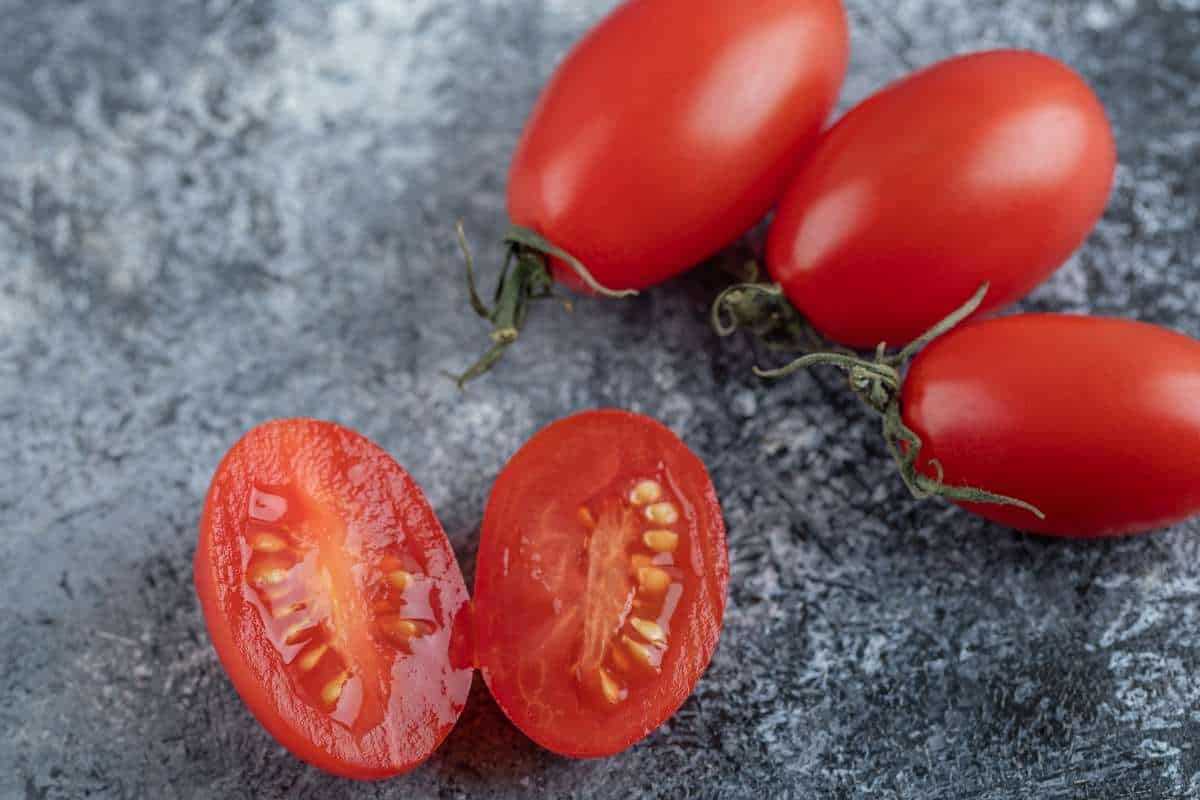
Caprese salad is a classic Italian dish that showcases the flavors of fresh tomatoes, creamy mozzarella cheese, and aromatic basil. Here’s how you can make a delicious Caprese salad using salad varieties of tomatoes:
- Ingredients:
- Salad variety tomatoes, sliced
- Fresh mozzarella cheese, sliced
- Fresh basil leaves
- Extra virgin olive oil
- Balsamic glaze or reduction
- Salt and pepper to taste
- Instructions:
- Arrange the sliced tomatoes and mozzarella cheese on a serving platter.
- Tuck the fresh basil leaves between the tomato and mozzarella slices.
- Drizzle the salad with extra virgin olive oil and balsamic glaze or reduction.
- Season with salt and pepper to taste.
- Serve immediately and enjoy!
3. Bruschetta:
Bruschetta is a popular Italian appetizer that features toasted bread topped with a flavorful tomato mixture. Salad varieties of tomatoes can elevate the flavor of bruschetta with their juicy and tangy taste. Here’s a simple recipe for tomato bruschetta:
- Ingredients:
- Salad variety tomatoes, diced
- Garlic cloves, minced
- Fresh basil, chopped
- Extra virgin olive oil
- Salt and pepper to taste
- Baguette or Italian bread, sliced and toasted
- Instructions:
- In a bowl, combine the diced tomatoes, minced garlic, chopped basil, olive oil, salt, and pepper.
- Allow the mixture to sit for about 15 minutes to let the flavors combine.
- Spread the tomato mixture onto the toasted bread slices.
- Serve immediately and enjoy this tasty appetizer!
4. Salsa:
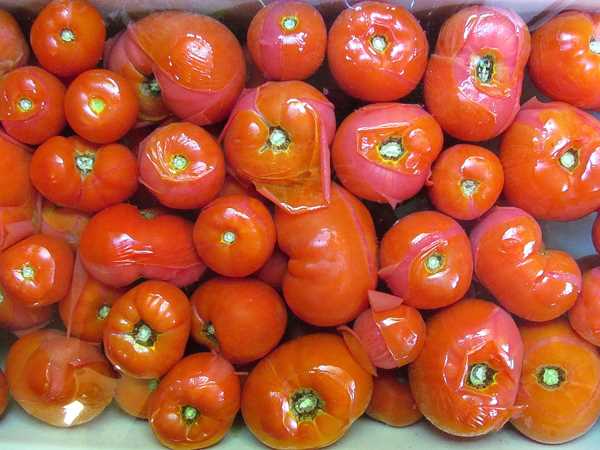
Salad varieties of tomatoes can add a burst of freshness and flavor to homemade salsa. Here’s a simple recipe for tomato salsa:
- Ingredients:
- Salad variety tomatoes, diced
- Red onion, finely chopped
- Jalapeno pepper, seeded and finely chopped
- Fresh cilantro, chopped
- Lime juice
- Salt to taste
- Instructions:
- In a bowl, combine the diced tomatoes, chopped red onion, jalapeno pepper, and cilantro.
- Add lime juice and salt to taste, and mix well.
- Let the salsa sit for a few minutes to allow the flavors to meld together.
- Serve with tortilla chips or use it as a topping for your favorite Mexican dishes.
These are just a few popular uses and recipes for salad varieties of tomatoes. Feel free to get creative and explore different ways to enjoy these flavorful tomatoes!
Beautiful Canning Options for High-Growing Tomatoes
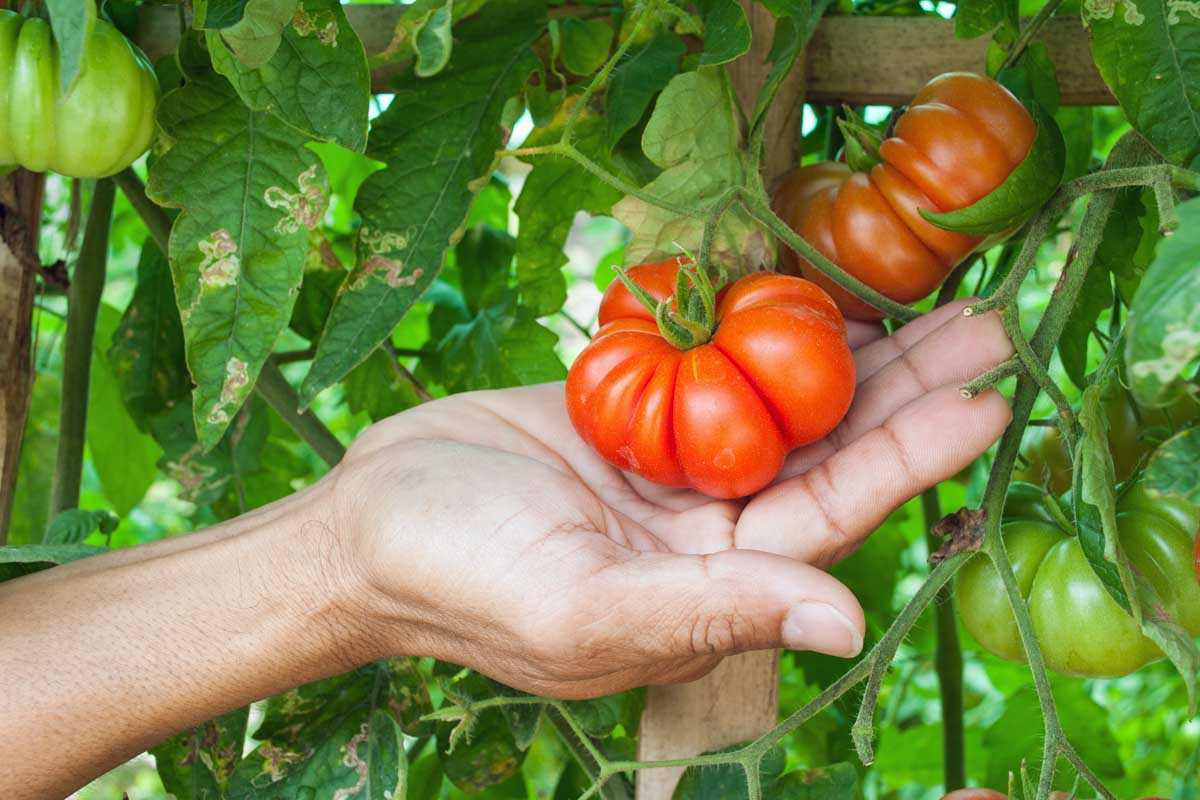
If you love canning tomatoes to enjoy their vibrant flavors all year round, consider these beautiful high-growing tomato varieties. They are not only delicious but also visually appealing, making your canned goods even more enticing:
1. Black Krim
The Black Krim tomato is known for its stunning dark red-purple color. This heirloom variety originated from the Black Sea region of Russia and has a complex flavor that is both sweet and smoky. When canned, its deep color adds a touch of elegance to your pantry.
2. Green Zebra
The Green Zebra tomato is a small, tangy, and refreshing variety that is perfect for canning. It has vibrant green stripes that create a beautiful contrast when preserved. Its unique flavor profile adds a refreshing twist to your canned tomato dishes.
3. Pineapple
The Pineapple tomato is a large, meaty variety with yellow and red streaks. When sliced and canned, it creates beautiful layers of colors that resemble the tropical fruit it is named after. Its sweet and tangy flavor makes it an ideal choice for salsa or chutney.
4. Cherokee Purple
The Cherokee Purple tomato is another heirloom variety that offers a rich and sweet flavor. Its deep, dusky purple skin adds a touch of mystery to your canning jars. Whether used in sauces, relishes, or purees, the Cherokee Purple tomato is sure to make an impression.
5. Yellow Pear
The Yellow Pear tomato is a charming variety that produces small, yellow, pear-shaped fruits. Its bright color brings a cheerful touch to your canned goods. These tomatoes are delicious when canned whole and can be used in salads or as a colorful garnish.
These beautiful tomato varieties will not only enhance the taste of your canned goods but also make them visually appealing. Whether you choose the dark hues of the Black Krim or the vibrant stripes of the Green Zebra, your canned tomatoes will be a feast for both the taste buds and the eyes.
Canning Equipment and Techniques
When it comes to canning tomatoes, having the right equipment and mastering the proper techniques is essential. Here are some key items you’ll need and techniques you should know to successfully can your homegrown tomatoes:
Equipment
- Canning Jars: Use glass jars specifically designed for canning, such as Mason jars or Ball jars. Make sure they are in good condition and have no cracks or chips.
- Lids and Bands: You’ll need new lids for each batch of canning. The bands can be reusable, as long as they are not rusty or bent.
- Water Bath Canner: This large pot with a lid and a rack is used for immersing the filled jars in boiling water to create a seal and kill any bacteria. It’s important to have a canner that is deep enough to cover the jars with at least 1-2 inches of water.
- Canning Funnel: A funnel with a wide mouth is helpful for filling jars without spilling the contents.
- Colander or Strainer: Use a colander or strainer to remove excess liquid from the tomatoes before filling the jars.
- Bubble Remover or Spatula: A tool like a bubble remover or a spatula can be used to remove air bubbles from the jars before sealing them.
- Labels and Markers: Label your jars with the date and the type of tomatoes inside for easy identification in the future.
- Tongs or Jar Lifter: These tools will help you safely handle the hot jars during and after the canning process.
Techniques
- Sterilizing: Before filling your jars with tomatoes, wash them in hot, soapy water, then rinse them thoroughly. To sterilize the jars, place them in boiling water for 10 minutes. Make sure the lids and bands are also sterilized by boiling them or placing them in hot water.
- Preparing the Tomatoes: Wash the tomatoes and remove any stems or blemishes. You can blanch them in boiling water for 30 seconds to loosen the skins, then plunge them into an ice bath to make peeling easier. Alternatively, you can leave the skins on for a more rustic texture.
- Filling the Jars: Fill the jars with prepared tomatoes, leaving about ½ inch of headspace at the top. Use a bubble remover or spatula to release any trapped air bubbles. Wipe the rim of the jars with a clean, damp cloth to ensure a good seal.
- Sealing the Jars: Place a sterilized lid on top of each jar and screw on the band until it’s just fingertip tight. Don’t overtighten, as air needs to escape during the canning process. You can use a jar lifter or tongs to place the filled jars into the canner, making sure they are fully submerged in water.
- Processing: Bring the water in the canner to a rolling boil and process the jars for the recommended amount of time, following a reliable recipe or canning guide. Adjust the processing time based on your altitude if necessary.
- Cooling and Storing: Once the processing time is complete, carefully remove the jars from the canner and place them on a towel or rack to cool. As they cool, you’ll hear a popping sound, indicating that they are properly sealed. After 24 hours, check the seals by pressing down on the center of the lids. If they don’t flex, the jars are sealed. Store the sealed jars in a cool, dark place for up to a year.
With the right equipment and techniques, you can enjoy the taste of fresh tomatoes all year long by canning them at their peak of ripeness!
5 Delicious Canning Recipes to Try
If you’re looking to preserve the flavors of fresh tomatoes for the whole year, canning is the way to go. Here are 5 delicious canning recipes that you should definitely try:
1. Classic Tomato Sauce
This recipe is a staple in many kitchens. Made with ripe tomatoes, onions, garlic, and a blend of herbs, this tomato sauce can be used in pasta dishes, casseroles, and so much more. It’s packed with flavors and is a must-have in your pantry.
2. Spicy Salsa
If you enjoy a bit of heat, this spicy salsa recipe is perfect for you. Packed with tomatoes, onions, jalapenos, and cilantro, this salsa will add a kick to your tacos, nachos, and even your morning omelets. It’s the perfect combination of tangy and spicy.
3. Sweet Tomato Jam
If you’re looking for a unique way to use your tomatoes, try making sweet tomato jam. This delicious spread is made by slowly simmering tomatoes with sugar, lemon juice, and a hint of spices. It’s great as a topping for sandwiches, toast, or even as a dip for cheese and crackers.
4. Pickled Green Tomatoes
Don’t let those green tomatoes go to waste. Pickle them instead! These tangy and crunchy pickled green tomatoes are a great addition to charcuterie boards, sandwiches, or even enjoyed on their own. The pickling process gives them a unique flavor that you won’t be able to resist.
5. Tomato Relish
Tomato relish is a versatile condiment that can be used in a variety of dishes. Made with tomatoes, onions, bell peppers, and spices, this relish adds a tangy and slightly sweet flavor to your burgers, sandwiches, and grilled meats. It’s a must-try!
These delicious canning recipes will not only help you preserve the flavors of fresh tomatoes but also add a burst of flavor to your dishes throughout the year. Give them a try and enjoy the taste of summer all year round!
Tips for Storing and Enjoying Canned High-Growing Tomatoes
Once you have canned your high-growing tomatoes, it’s important to store them properly so you can enjoy their delicious flavors for months to come. Here are some tips for storing and enjoying your canned tomatoes:
- Choose the right containers: Use glass jars with airtight lids for storing your canned tomatoes. Mason jars are a popular choice and are easily available.
- Label and date: It’s important to label your jars with the contents and the date of canning. This will help you keep track of freshness and ensure you use the oldest jars first.
- Store in a cool and dark place: To maintain the quality of your canned tomatoes, store them in a cool and dark place like a pantry or cellar. The ideal temperature is around 50-70°F (10-21°C).
- Check for spoilage: Before using your canned tomatoes, it’s important to check for any signs of spoilage. Discard any jars with bulging lids, strange odors, or mold. When in doubt, throw it out!
Enjoying Your Canned Tomatoes
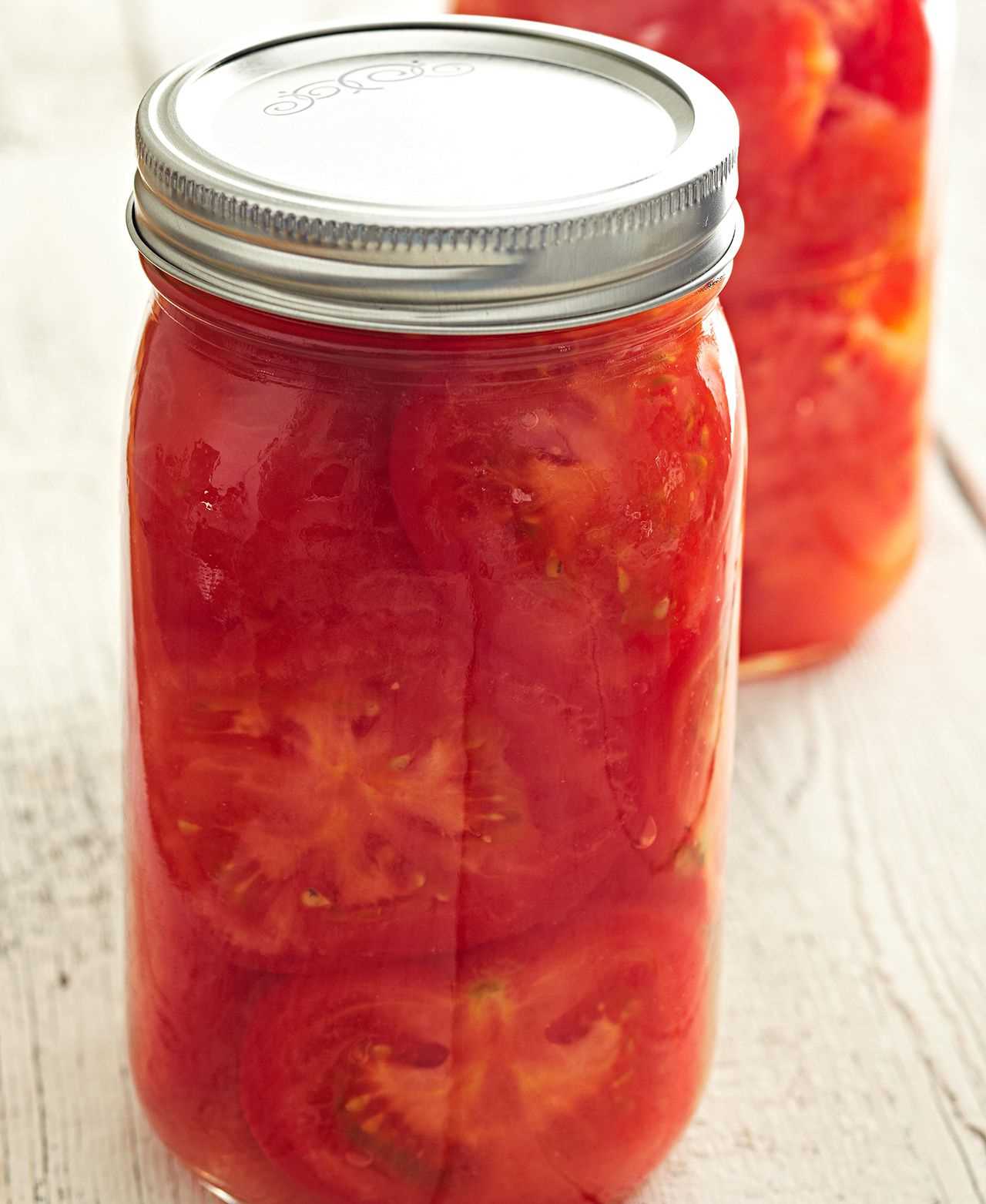
Once you’re ready to enjoy your canned high-growing tomatoes, here are some ideas to get you started:
- Sauces and soups: Use your canned tomatoes as a base for homemade pasta sauces and soups. The rich flavor of high-growing tomatoes will enhance the taste of your dishes.
- Salsa and bruschetta: Make fresh and flavorful salsa or bruschetta using your canned tomatoes. Add some onions, garlic, herbs, and spices for a tasty appetizer or topping.
- Pizza toppings: Spread your canned tomatoes over a pizza crust and top with cheese and other ingredients for a delicious homemade pizza.
- Tomato sandwiches: Use your canned tomatoes as a filling for sandwiches. Pair them with fresh lettuce, cheese, and your favorite condiments for a tasty lunch option.
- Tomato juice or cocktail: Blend your canned tomatoes with some spices and herbs to make a refreshing tomato juice or cocktail. Add a splash of vodka for an adult version.
With these tips, you can store your canned high-growing tomatoes properly and enjoy their flavors in a variety of delicious dishes. Happy canning and happy eating!
“Question-Answer”
What are the best salad tomato varieties?
Some of the best salad tomato varieties include cherry tomatoes, beefsteak tomatoes, heirloom tomatoes, and grape tomatoes.
Can you recommend some salad tomato varieties that are easy to grow?
Yes, some easy-to-grow salad tomato varieties include Early Girl, Celebrity, and Sweet 100.
Which tomato varieties are ideal for canning?
There are several tomato varieties that are ideal for canning, such as Roma tomatoes, San Marzano tomatoes, Amish Paste tomatoes, and SuperSauce tomatoes.
What are some tips for growing salad tomatoes?
Some tips for growing salad tomatoes include choosing the right location with plenty of sunlight, providing support for the plants, watering consistently, and fertilizing regularly.
Are there any tomato varieties that are resistant to diseases?
Yes, there are tomato varieties that are known for their disease resistance, such as Mountain Magic, Iron Lady, and Defiant.
Can you recommend some tomato varieties that have unique colors?
Yes, some tomato varieties with unique colors include Black Krim, Green Zebra, Yellow Pear, and Orange Russian 117.







